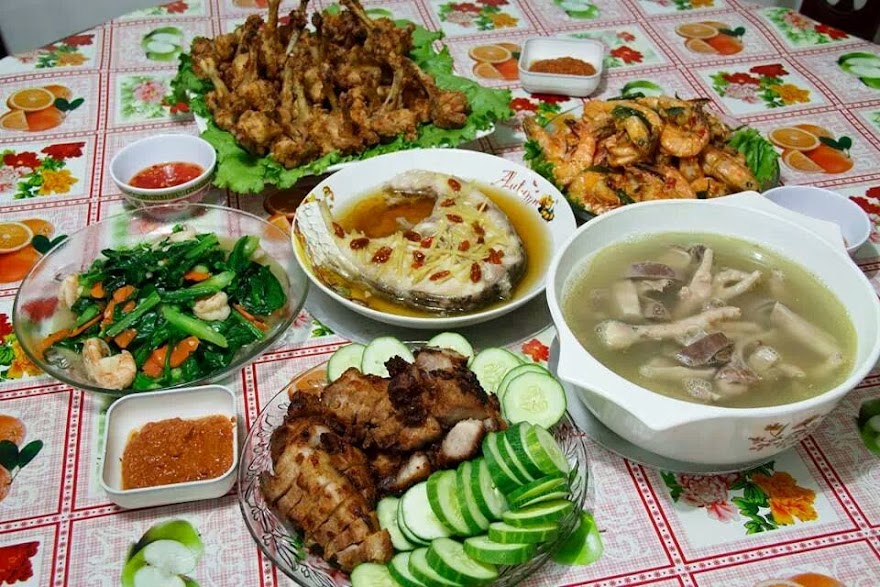During my recent trip to Hongkong the weather has been cooling and at times when it drizzles along with the breeze it can be rather cold. Throughout our 5D4N stay there we have to put on an extra jacket if we are out and not to mention, we haven't sweat a bit! The one and only time which both me and hubby feel the heat and slightly sweat is when we have our dinner of Singapore Style Hongkong Fried Beehoon. Though it is just a simple stir-fried dish but the extra ingredients of curry powder makes the dish taste awesome. While I am enjoying the food I also gets to observe the ingredients used as well as making full use of my taste buds to try to get as close as possible to improvise this dish at my home kitchen.
Here's to share "from Hongkong to Kuching!"
This is what you need: (Serves 3)
- half onion (sliced)
- 5 pip garlic (coarsely chopped)
- 2 egg (lightly beaten)
- some sliced meat (I use pork tenderloin which is soft, so I cut it slightly thicker) marinate with 1/2 tbsp of light soy sauce and cornflour
- some prawns (shelled and deveined)
- some shredded red carrot
- shredded cabbage
- celery (young part, leaves with the stem)
- 1 1/2 to 2 tbsp curry powder, depending on individual liking (I use the watch brand)
- 1 cup cooking oil (for frying the meat)
- water
Seasonings:
- 3 tbsp light soy sauce
- chicken stock granules (to taste)
- dash of grounded pepper
Few simple steps:
- In a heated wok add in cooking oil, fry the pork tenderloin using medium heat until almost cook, dish and drain.
- Discard oil, leave about 3 tbsp, fry the garlic and onion until fragrant.
- Add in prawns, stir fry briefly, add in all the veggies and give it a quick fry.
- Add in the curry powder and mix till well combined.
- Move the fried ingredients to the side of the wok, add a tbsp oil then the beehoon and give it a quick fry.
- Mix in all the other ingredients, the fried pork, add in seasonings and water. Stir till all the ingredients are well combined. Taste for correct seasoning.
- Make a well in the center, pour in the beaten egg and give it good mix to ensure that the eggs are evenly combined with the beehoon.
- Drizzle dash of grounded pepper.
- Off the heat, dish on serving platter and it's time to enjoy!
Notes:
- The actual dish does not use celery but spring onions. I am using it to cook this dish as I have leftover the tender leafy park of the celery from making my daily celery juice. However, it taste great on this dish.
- If you are cooking for a bigger crowd I suggest dishing out the fried ingredients into a plate at Step 5 so that the ingredients won't have to be overcooked and the beehoon gets to be fried evenly.






















